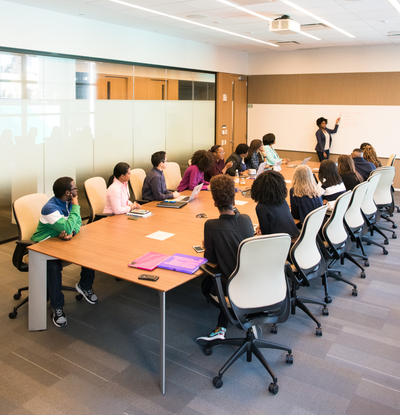Learn more about my book "The Courageous Ask"
In Whose Lap Does a Leadership Fall Find Itself?
When a leadership fall occurs, there is a tremendous amount of direct and indirect damage to work through for the leader and the organization.
On a personal level, especially concerning a moral failure, the damage is widespread: betrayal of family, close friends, and personal supporters. There are sometimes personal legal issues and perhaps the loss of income. The personal sin issues can also present quite a problem for the Christian leader. The list goes on and on.
At the organizational level, the damage and difficulties can also be widespread: tough board decisions, managing the messaging and the damage to reputation, financial and moral support struggles, maintaining confidence in services, volunteer and staff morale. And yes, that list goes on and on as well.
It’s simply not an easy time for any individual or organization.
Hopefully, in the previous article you recognized that a nonprofit leadership fall can happen to you as a leader, in your organization, or even to an organization that is valuable to you.
The personal pain that comes from a leadership fall runs deep, especially for those closest to the fall. I have felt that deep pain myself, as the fallen leader and as the betrayed. You’ll find this personal difficulty acknowledged throughout these articles.
(This article is the third in a series that focuses on starting a conversation centered on preventing the fall of nonprofit leaders. I write it from a Christian perspective, but all leaders will benefit. Be sure to sign up to receive these articles via email every Tuesday at briankreeger.com. In addition to receiving these articles two days before they hit social media, you will receive the Introduction and the Appendix (My story) to my upcoming book, The Courageous Ask: A Proactive Approach to Prevent the Fall of Christian Nonprofit Leaders.)
There is one group at the epicenter of it all, whose decisions will affect almost every facet of a leadership fall: the organizations accountability structure, most of the time a board of directors.
Yes, the leadership fall finds itself squarely in the lap of the board of directors. The board finds themselves at the intersection of almost every relationship in a leadership fall: the leader, the family of the leader, the organization, the community (including the faith community), the donors, those being served, the media, the law, etc. And every one of these constituencies has a distinct set of strongly held expectations of the board.
It can be quite overwhelming and pressure-packed for the board as they work to balance their responsibilities within the organization and their own personal responsibilities. Most times they are a volunteer, for Pete’s sake!
The nonprofit board is the entity. As such, the board makes decisions that hopefully will drive an organization’s mission toward growth, success, and positive community impact. Boards take great pride in these successes, and they should. But boards sometimes experience the flip side of that desired success.
Even without a damaging leadership fall, keeping a nonprofit executive in their seat can be difficult. Depending on which studies you look at, it is estimated that nonprofit leadership turnover sits at between 18% and 22% annually. That means that if you sit on the board of a nonprofit, you will probably be looking at a leadership change within the next five years.
On average, it takes seven to ten months to recruit a new executive director. In many instances, more than a year may pass between the prior leader leaving and the new leader being fully on board and contributing. During this time, it is not uncommon for employees, partners and funders to lose confidence or pause funding during this transition. Key stakeholders may leave, further increasing the transition turmoil.1
And those statistics include many reasons a leader may leave an organization, let alone a very damaging fall.
So again, if a leader falls, whether the fall is personal or professional in nature, the issue ends up in the board's lap. The potential for organizational damage is consistent, regardless of the type of issue. Tough, uncomfortable decisions will need to be made.
As I will discuss in a later article, boards and accountability structures often manage the leader heavily on the job description and tangible responsibilities while pushing personal elements aside because it is easier and a lot less messy.
But let’s be honest, most falls occur with a personal issue at their core—and yes, they are messy. Yet boards continue to manage their executives in the world of the profit and loss statement and the report of key performance indicators. These are extremely important, but for ease the board typically moves to the back-burner their attention to the strong personal character traits that weighed heavily in the hiring of that executive.
I would argue that the attention that is applied to the personal life and humanity of a nonprofit leader is not directly proportional to the damage that can be done to the organization if that leader falls with a personal issue at the core of the fall. In fact, I would further argue that the threat of a personally dysfunctional executive overrides nearly every properly functioning responsibility of a board of directors, and this threat should garner the board’s attention more than any other.
No board member joins a board expecting to manage a leadership fall.
But leadership falls are happening all around us and the responsibility to clean up the mess almost always falls on those responsible for the entity….the board of directors.
So why not search for a proactive approach to prevent the fall of nonprofit leaders that includes the difficult personal struggles of the leader? If an organization does not do this, they risk a leadership fall.
The board of directors is just one of the groups that can influence the direction of a struggling leader. But unfortunately the brunt of the fall typically falls on them. This series of articles will help you, no matter your role (the leader, a board member, a constituent, a congregant, a community member), to discover that proactive plan.
So far we have looked at the fact that leadership falls are happening all around us, I have helped you recognize that a fall could happen to you or your organization, or even in an organization you care about, and now we know where that fall ends up.
Next week I am going to share part one of two in discussing the difficulties in nonprofit leadership, mainly human nature, that sometimes lead to a fall.
1 Vargas Group, Non Profit Executive Turnover, June 2019
Be sure to sign up to receive these articles via email every Tuesday at briankreeger.com. In addition to receiving these articles two days before they hit social media, you will receive the Introduction and the Appendix (My Story) to my upcoming book, The Courageous Ask: A Proactive Approach in Preventing the Fall of Christian Nonprofit Leaders.
Brian@briankreeger.com
#Leadership Fall #Board of Directors #Leadership Survival # Board of Directors Responsibilities #Moral Failure #Board Decisions #Accountability #Nonprofit Relationships #Nonprofit Retention #Executive Retention #Proactive Approach






